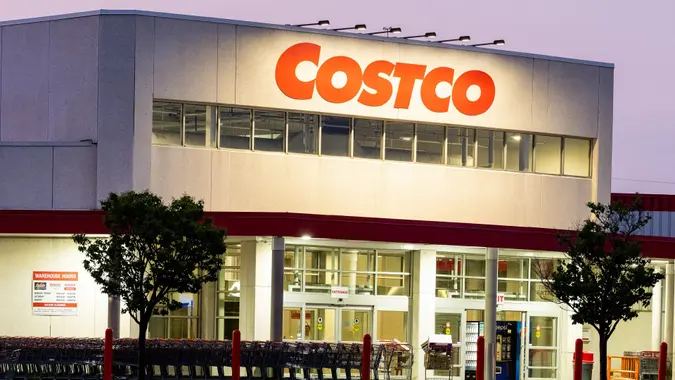I Asked ChatGPT What Black Friday Deals Aren’t Worth It — Here’s What It Said

Commitment to Our Readers
GOBankingRates' editorial team is committed to bringing you unbiased reviews and information. We use data-driven methodologies to evaluate financial products and services - our reviews and ratings are not influenced by advertisers. You can read more about our editorial guidelines and our products and services review methodology.

20 Years
Helping You Live Richer

Reviewed
by Experts

Trusted by
Millions of Readers
Black Friday creates urgency around “deals” that often aren’t deals at all. I asked ChatGPT to identify which Black Friday offers waste money instead of saving it.
The AI broke down five categories of fake deals and provided strategies for avoiding them. And if you plan on shopping during Black Friday anyways, don’t miss these deals from Nordstrom Rack.
Low-Quality Products With Huge Discounts
ChatGPT flagged that many retailers use Black Friday to clear poor-selling items or cheaper product versions. The material quality, finish and durability may be worse than normally sold versions.
A TV advertised at 60% off might be a special Black Friday model with fewer HDMI ports, lower refresh rates or cheaper components than the regular model. The discount looks massive, but you’re getting an inferior product made specifically for Black Friday clearance.
The AI wrote that this practice is widespread across categories from electronics to clothing. Manufacturers create “doorbuster” versions that look similar to regular products but cut corners on specs and materials. You’re not getting the $800 TV for $320. You’re getting a $320 TV that normally wouldn’t exist marketed as if it were worth $800.
Inflated Regular Prices Make Discounts Look Better
ChatGPT warned about deals where the “regular price” gets inflated shortly before the sale to make discounts appear larger.
A retailer lists a sweater at $100 for two weeks before Black Friday, then marks it 50% off to $50. Sounds great except the sweater normally sells for $60 year-round. The “50% off” is really a 17% discount disguised as something better.
The AI said this pricing manipulation is common enough that savvy shoppers should verify prices weren’t artificially raised before sales began. Looking at price history shows whether discounts are genuine or manufactured.
Impulse Purchases You Didn’t Plan To Buy
The AI wrote that buying something simply because it’s tagged “Black Friday sale” doesn’t create value if you didn’t need it.
ChatGPT’s advice: “If you didn’t plan to buy it before the sale, ask whether you really need it.” A 40% discount on something you won’t use is still wasted money.
Black Friday marketing creates artificial urgency designed to trigger impulse purchases. The scarcity messaging– “Only 3 left!” or “Sale ends in 2 hours!”– pressures people into buying things they’ll regret or never use.
Items That Drop More Later or Match Year-Round Pricing
ChatGPT shared categories where Black Friday discounts aren’t actually the best prices available.
Electronics, TVs and appliances might have deeper or comparable discounts outside Black Friday. Retailers schedule “pseudo-sales” just for the event that match pricing available during other sale periods throughout the year.
The AI wrote that waiting for post-holiday clearance, end-of-season sales or newer model releases often produces better pricing than Black Friday doorbusters. January electronics sales frequently beat November Black Friday deals as retailers clear inventory for CES announcements.
Scams and Risky Sellers
ChatGPT warned that Black Friday’s scale makes scams proliferate. Fake websites, counterfeit products and unrealistic “too-good-to-be-true” prices spike during the shopping frenzy.
The AI recommended ensuring you’re dealing with reputable sellers and verifying deals before purchasing. A $500 laptop listed for $150 from an unknown seller is almost certainly a scam or counterfeit product.
One piece of information I found particularly helpful from ChatGPT is that even legitimate marketplace platforms like Amazon and eBay host third-party sellers who use Black Friday traffic to move counterfeit goods or take orders they can’t fulfill.
Verifying seller ratings and return policies matters more during high-volume sale events. Do your due diligence!
ChatGPT’s Strategies for Actually Saving Money
Beyond identifying bad deals, the AI had tactical advice for maximizing Black Friday value when deals are legitimate. Here are some of my favorites:
- Track prices ahead of time using tools like Honey or CamelCamelCamel to verify discounts are real. If a product “normally” costs $200 but price history shows it’s been $150 for months, the Black Friday “sale” to $140 isn’t impressive.
- Create a purchase wish list before Black Friday with maximum price thresholds for each item. This prevents impulse buying and helps you quickly identify when prices hit your targets versus getting distracted by items you don’t need.
- Check that sale products match the exact model you’d buy normally, not downgraded Black Friday versions. Compare model numbers and specifications to regular inventory to catch manufacturer substitutions.
- Focus on value rather than discount percentage. A 30% discount on something you won’t use delivers zero value. A 15% discount on something you need and will use regularly is worth it.
- Verify seller reputation and return policies, especially for online purchases from smaller or unknown retailers. Black Friday attracts fly-by-night operations that disappear after collecting payments.
- Consider timing and whether Black Friday truly offers the best price or if waiting for other sales produces better results. Not every category hits its lowest price in November.
 Written by
Written by  Edited by
Edited by 

























